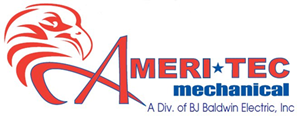
A furnace is almost always a background player in your home, ensuring you're warm in the cold winter months. It regularly isn't noticed until something breaks down.
One root cause could be that your furnace has a cracked heat exchanger. It can be a safety risk, so it’s important to familiarize yourself with the evidence of a cracked heat exchanger and what to do if you suspect that is the problem.
What Is a Heat Exchanger in a Furnace?
A heat exchanger helps transition heat from the combustion chamber of your furnace to the air that circulates through the air ducts. It generally handles this via coils or tubes that warm the air while serving as a barrier to keep gas produced in the combustion chamber, called flue gasses, from getting out into your home.
Is a Cracked Heat Exchanger Dangerous?
Thanks to its key role, it isn't surprising that a cracked heat exchanger can be hazardous. Cracks in the heat exchanger can enable dangerous gasses – such as carbon monoxide, which can be lethal – to be distributed throughout your home.
For obvious reasons, never turn on your heater if you think there's a crack in the heat exchanger, as this could make your entire household ill. Contact an HVAC professional immediately if you are worried your heater has a cracked heat exchanger that should be repaired.
Four Warning Signs of a Cracked Heat Exchanger:
- Furnace switches off: Cracks in the heat exchanger could cause your furnace to turn off.
- Unusual Smells: If the air escaping your furnace has an intense chemical scent, it could be evidence gasses are seeping through cracks in your heat exchanger. These byproducts, which can smell like formaldehyde, are a significant warning sign.
- Carbon monoxide alarm goes off or you notice poisoning symptoms: If a cracked heat exchanger is emitting carbon monoxide inside your home, your carbon monoxide alarm should go off or household members may start experiencing signs of carbon monoxide poisoning. Symptoms include headaches, dizziness, weakness, nausea, vomiting or feeling sleepy. If your alarm goes off or you feel unusually tired, leave the home immediately and then call for help.
- Soot: If you notice black sooty buildup on the exterior of your furnace, it’s more evidence something may be seriously wrong.
What to Do if a Furnace Heat Exchanger is Cracked
If you believe your furnace has a cracked heat exchanger, hire a pro experienced in furnace installation Narvon right away so they can examine your system and, if required, perform a furnace heat exchanger replacement. Costs will fluctuate depending on the situation, but estimates can roughly suggest $1,000 to $3,000.
Estimates aside, the good news is that heat exchangers are often included in the warranty. You’ll want to check the warranty paperwork on your furnace, because while the warranty won't always cover the entire cost of repairs, it can significantly lower your bill.
How to Prevent a Cracked Heat Exchanger in Your Home
One of the most convenient ways to minimize the risk of problems in your furnace overall is through routine furnace maintenance. Furnaces offer the most benefits when they operate efficiently. Contacting a skilled professional to examine your furnace for old parts, clogged filters and other common problems can help you avoid getting a big bill later on.
It’s also a good idea to review your furnace filters every few months – it’s encouraged some filters be replaced every 90 days or sooner if they are dirty or grimy. While the filters are not part of the heat exchanger itself, the strain of drawing air through a clogged filter makes the entire furnace work longer to accomplish its job. And the harder your furnace works, the more strain pieces like the heat exchanger will experience.
